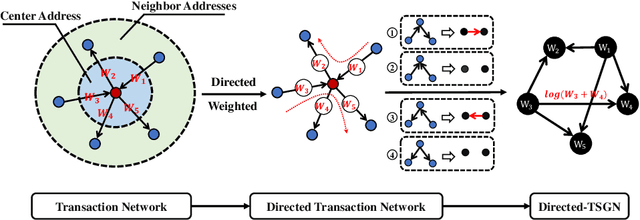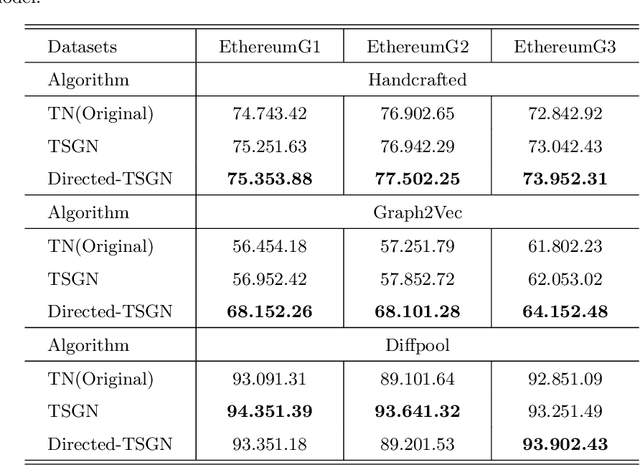Pengtao Chen
DiTFastAttnV2: Head-wise Attention Compression for Multi-Modality Diffusion Transformers
Mar 28, 2025Abstract:Text-to-image generation models, especially Multimodal Diffusion Transformers (MMDiT), have shown remarkable progress in generating high-quality images. However, these models often face significant computational bottlenecks, particularly in attention mechanisms, which hinder their scalability and efficiency. In this paper, we introduce DiTFastAttnV2, a post-training compression method designed to accelerate attention in MMDiT. Through an in-depth analysis of MMDiT's attention patterns, we identify key differences from prior DiT-based methods and propose head-wise arrow attention and caching mechanisms to dynamically adjust attention heads, effectively bridging this gap. We also design an Efficient Fused Kernel for further acceleration. By leveraging local metric methods and optimization techniques, our approach significantly reduces the search time for optimal compression schemes to just minutes while maintaining generation quality. Furthermore, with the customized kernel, DiTFastAttnV2 achieves a 68% reduction in attention FLOPs and 1.5x end-to-end speedup on 2K image generation without compromising visual fidelity.
FAVOR-Bench: A Comprehensive Benchmark for Fine-Grained Video Motion Understanding
Mar 19, 2025Abstract:Multimodal Large Language Models (MLLMs) have shown remarkable capabilities in video content understanding but still struggle with fine-grained motion comprehension. To comprehensively assess the motion understanding ability of existing MLLMs, we introduce FAVOR-Bench, comprising 1,776 videos with structured manual annotations of various motions. Our benchmark includes both close-ended and open-ended tasks. For close-ended evaluation, we carefully design 8,184 multiple-choice question-answer pairs spanning six distinct sub-tasks. For open-ended evaluation, we develop both a novel cost-efficient LLM-free and a GPT-assisted caption assessment method, where the former can enhance benchmarking interpretability and reproducibility. Comprehensive experiments with 21 state-of-the-art MLLMs reveal significant limitations in their ability to comprehend and describe detailed temporal dynamics in video motions. To alleviate this limitation, we further build FAVOR-Train, a dataset consisting of 17,152 videos with fine-grained motion annotations. The results of finetuning Qwen2.5-VL on FAVOR-Train yield consistent improvements on motion-related tasks of TVBench, MotionBench and our FAVOR-Bench. Comprehensive assessment results demonstrate that the proposed FAVOR-Bench and FAVOR-Train provide valuable tools to the community for developing more powerful video understanding models. Project page: \href{https://favor-bench.github.io/}{https://favor-bench.github.io/}.
$Δ$-DiT: A Training-Free Acceleration Method Tailored for Diffusion Transformers
Jun 03, 2024



Abstract:Diffusion models are widely recognized for generating high-quality and diverse images, but their poor real-time performance has led to numerous acceleration works, primarily focusing on UNet-based structures. With the more successful results achieved by diffusion transformers (DiT), there is still a lack of exploration regarding the impact of DiT structure on generation, as well as the absence of an acceleration framework tailored to the DiT architecture. To tackle these challenges, we conduct an investigation into the correlation between DiT blocks and image generation. Our findings reveal that the front blocks of DiT are associated with the outline of the generated images, while the rear blocks are linked to the details. Based on this insight, we propose an overall training-free inference acceleration framework $\Delta$-DiT: using a designed cache mechanism to accelerate the rear DiT blocks in the early sampling stages and the front DiT blocks in the later stages. Specifically, a DiT-specific cache mechanism called $\Delta$-Cache is proposed, which considers the inputs of the previous sampling image and reduces the bias in the inference. Extensive experiments on PIXART-$\alpha$ and DiT-XL demonstrate that the $\Delta$-DiT can achieve a $1.6\times$ speedup on the 20-step generation and even improves performance in most cases. In the scenario of 4-step consistent model generation and the more challenging $1.12\times$ acceleration, our method significantly outperforms existing methods. Our code will be publicly available.
TSGN: Transaction Subgraph Networks for Identifying Ethereum Phishing Accounts
Apr 20, 2021



Abstract:Blockchain technology and, in particular, blockchain-based transaction offers us information that has never been seen before in the financial world. In contrast to fiat currencies, transactions through virtual currencies like Bitcoin are completely public. And these transactions of cryptocurrencies are permanently recorded on Blockchain and are available at any time. Therefore, this allows us to build transaction networks (TN) to analyze illegal phenomenons such as phishing scams in blockchain from a network perspective. In this paper, we propose a Transaction SubGraph Network (TSGN) based classification model to identify phishing accounts in Ethereum. Firstly we extract transaction subgraphs for each address and then expand these subgraphs into corresponding TSGNs based on the different mapping mechanisms. We find that TSGNs can provide more potential information to benefit the identification of phishing accounts. Moreover, Directed-TSGNs, by introducing direction attributes, can retain the transaction flow information that captures the significant topological pattern of phishing scams. By comparing with the TSGN, Directed-TSGN indeed has much lower time complexity, benefiting the graph representation learning. Experimental results demonstrate that, combined with network representation algorithms, the TSGN model can capture more features to enhance the classification algorithm and improve phishing nodes' identification accuracy in the Ethereum networks.
 Add to Chrome
Add to Chrome Add to Firefox
Add to Firefox Add to Edge
Add to Edge